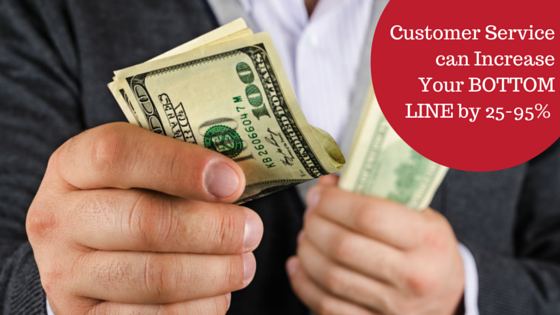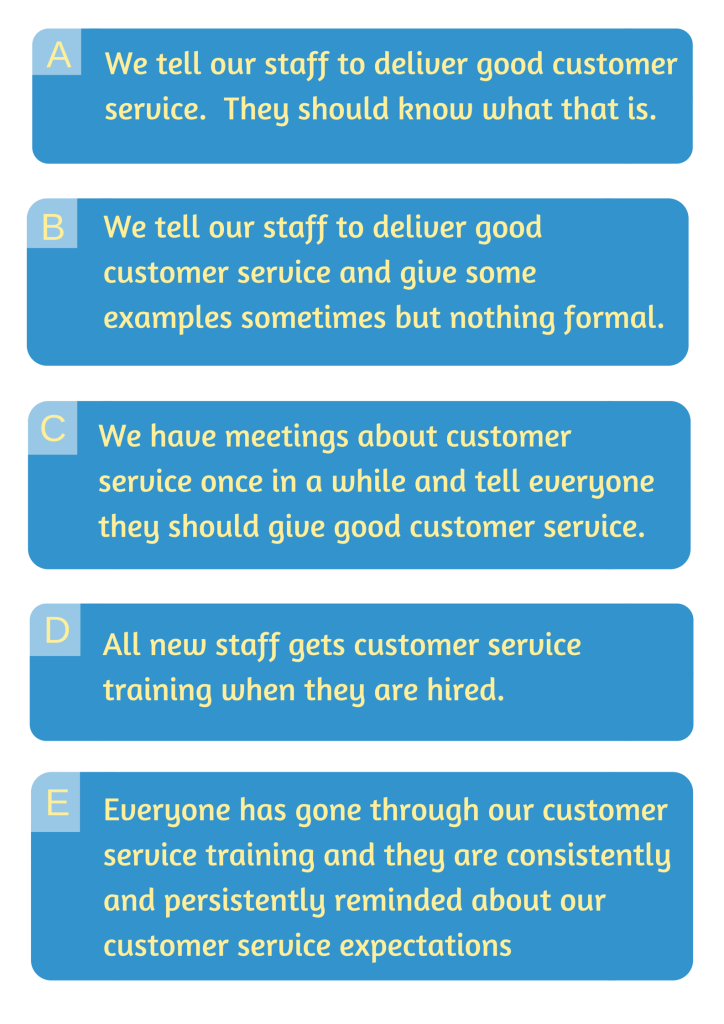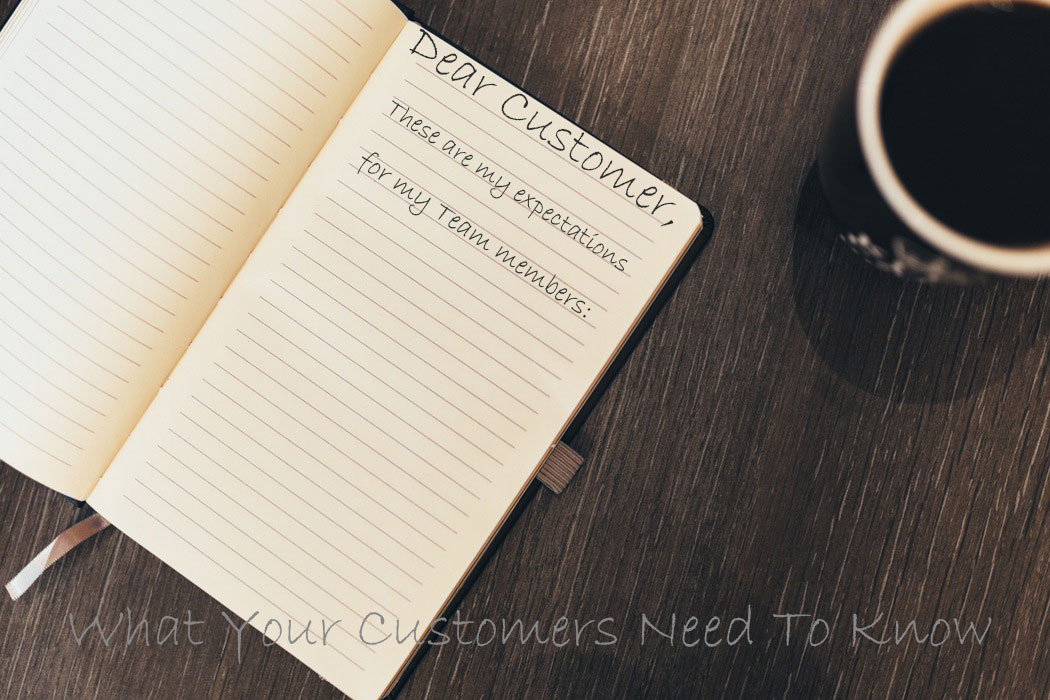So 82% of people who leave one business and go to another do so because of a customer service issue!
Have you ever wondered why customers leave and never come back?
Most people think it’s because of price, the person moved, the person died, etc… Well you don’t have to look far to find out the REAL reason that customers leave.
A US News and World Report study found that the average American business loses 15% of its customer base each year:
- 68% of customers who stop buying from one business and go to another do so because of poor or indifferent service.
- 14% leave because of an unsatisfactorily resolved dispute or complaint.
- 9% leave because of price.
- 5% go elsewhere based on a recommendation.
- 1% die.
The Harvard Business Review reported that if you can prevent 5% of your customers from leaving, you can increase your bottom line profit by 25–95%.
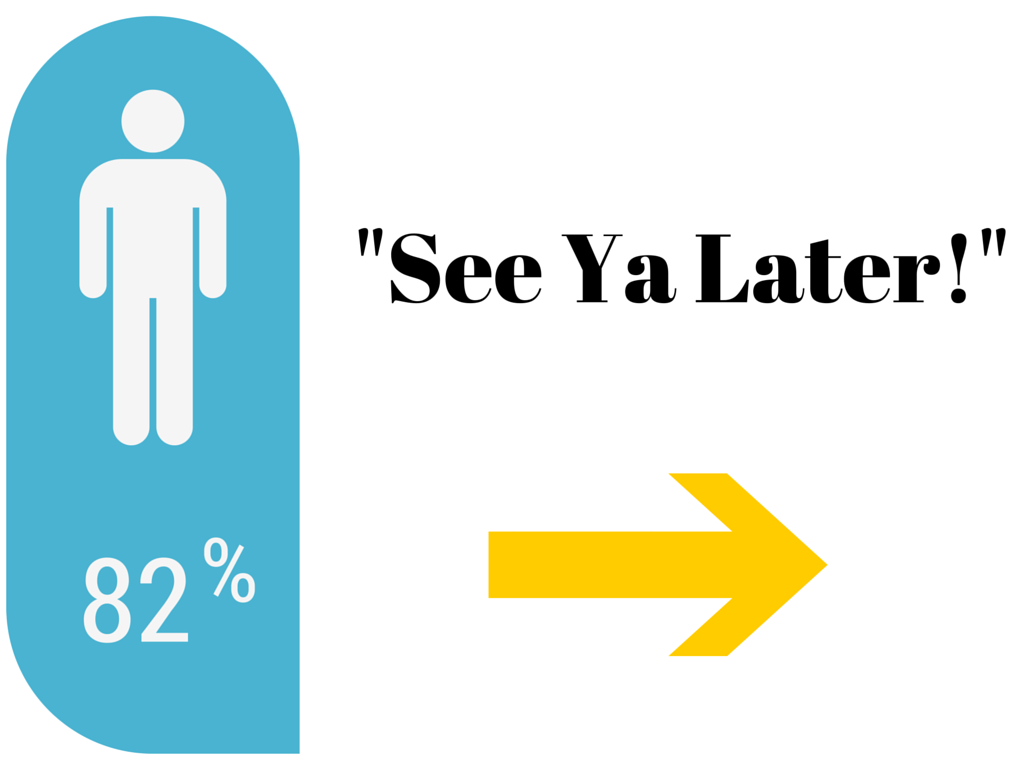 But what’s really sad for you and me, is that most of those customers who leave don’t bother to complain. They just leave and don’t come back. Then you’re stuck spending a bunch of time, money, and resources trying to get new customers when with some consistent and persistent messages and training to both your team members and customers, they would never have left in the first place.
But what’s really sad for you and me, is that most of those customers who leave don’t bother to complain. They just leave and don’t come back. Then you’re stuck spending a bunch of time, money, and resources trying to get new customers when with some consistent and persistent messages and training to both your team members and customers, they would never have left in the first place.
It’s been shown time and time again that getting new customers is one of the most expensive things you can do to grow your business. Once we get a new customer, we simply can’t afford to lose them.
But this is great news for you!
Every business category is seeing more and more competition every year. Just about every category has a version of national chain competition, competition from discount franchises, price competition, and competition from the internet, all making it harder and harder for you to thrive.
But the great news is that in this most important area, the reason most customers leave one business and go to another, you can not only beat the competition – you can crush them.
To illustrate this, lets talk about mindset for just a bit. Have you ever been asked the following question…
“What do you do for work?”
It comes up all the time, especially when you meet someone new. It’s a natural question, and most people answer almost without thinking. What would you say?
Well, if you’re like most people, you’re going to say something about the product or service you work with. You’re going to focus on the deliverable and there’s nothing wrong with that. But here’s the thing…
That is a large part of what you do at work, but that’s not necessarily the business you are in.
In just a bit, I’ll give you the powerful 2-step strategy to creating happy customers, but I need to go over something else first…
Before you start implementing these strategies in your business, it’s critical to understand that half the battle is getting in the right mindset. You can do all of the right things when it comes to customer service, but truly exceptional customer service first comes from a way of thinking that is far to rare these days.
Let me explain a little bit…
I used to tell people that we were in the business of selling retailers everything they needed to operate their stores. But I was wrong. Dead wrong.
In the early 1980’s I watched Tom Peters and Robert Waterman’s video In Search of Excellence. The video shows first day employee training at Disney World. The trainer at Disney asks the new cast members, “What business are we in? We know that GMC makes cars, and Whirlpool makes refrigerators. What do we make at Disney?” The answer is, We Make People Happy.”
From that moment on I knew what business we were in: We Make People Happy. That’s why we call the customer service we provide and teach, Make-You-Happy Customer Service.
By the way, I explain this and more in detail in by newest customer service book. You can get a free copy of my book The Happy Customer Handbook by clicking here.
I’m often asked, “What is the #1 thing business owners can do to improve their customer service?” Another question I get is, “Why is customer service so poor?”
The answer to both questions is the same. To illustrate this, let me tell you about some results we get when talking to actual business owners. When I speak to live audiences I often ask this question…
“What SHOULD you be doing when it comes to customer service training in your business?”
With every audience almost all hands go up for answer (E).
Sounds great right? Everyone knows that their team should have customer service training up front and also reinforce it. But there’s a catch…
We’ve surveyed thousands of business owners about customer service as well. We ask them the exact same question, but we flip one word. We ask:
“What ARE you doing when it comes to customer service training in your business?”
Only 2% answer (E)!
Why is it that everyone knows their team should have customer service training up front and consistent reminders, but almost no one does it?
Here’s what happens in most businesses. With the best of intentions, the business owner has a “rah, rah” meeting about customer service, and the service improves for a few weeks, and then without reminders you’re back where you started.
And it’s simple, the reminders don’t come because you’re a busy business owner and you have lots of other things to do.
But this may be even more amazing. More than 75% of all businesses have no upfront consistent customer service training for new employees.
So the answer to both questions, “What can business owners do to improve their customer service?” and “Why is customer service so poor?” is the same, and it’s all contained in the 2-step process below:
The 2 Step Formula to Customer Service Success
1. Train your entire team to deliver exceptional customer service.
At the very beginning, your entire team needs to get trained with your exceptional customer service expectations. This is the “rah, rah” training I talked about above. But it can’t stop there. You need to consistently and persistently reinforce those expectations.
Zig Ziglar says, “Repetition is the mother of all learning.”
But learning something doesn’t necessarily lead to behavior change, so when it comes to customer service in your business I tweak Zig’s quotation to,
“When it comes to customer service, repetition is the mother of all learning and permanent behavior change.”
Let’s take a second at this point and look at the bigger picture. Why is customer service so important in today’s business world?
I own four businesses, and all of them are dependent upon small independent businesses for their survival and growth. My businesses can only thrive when their business thrives, so I’m dedicated to seeing that independent small businesses not only survive, but thrive.
At our American Retail Supply 35th Anniversary customer Appreciation Conference and EXPO, one of the speakers asked all 800 people in attendance if they had a unique product that people couldn’t get anywhere else. In the entire room, only two hands went up, and I’m betting their competitors think there is a substitute product.
Almost no one has unique products or services that people can’t get elsewhere, so we need to give them a reason to do business with us rather than someone else.
The one area you can do that with the biggest return for your effort and money is with Make-You-Happy Customer Service.
I’m not talking about customer service in a box.
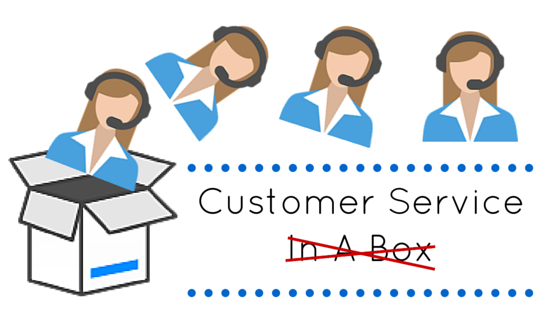 This isn’t about the canned, ‘Thanks for shopping at Mega-Mart, have a nice day’ kind of customer service.
This isn’t about the canned, ‘Thanks for shopping at Mega-Mart, have a nice day’ kind of customer service.
We’re talking about Make-You-Happy Customer Service in which, even if you mess up, the customer is going to come back because they like and believe in you and your staff!
We’re talking about the kind of customer service in which customers are not just satisfied, but loyal. Customer service in which customers not only come back time and time again, but enthusiastically tell others about you.
Another great reason to give Make-You-Happy Customer Service is, it’s fun.
People love getting Make-You-Happy Customer Service. But people also love, and have a huge amount of pride, when they give Make-You-Happy Customer Service. Make-You-Happy Customer Service is fun for you! It’s fun for your team! Your customers love it! And the day goes much faster when everyone has fun.
Make-You-Happy Customer Service is not just great customer service when you’re watching, but all of the time. In the following video, I explain a few of the reasons exceptional Customer Service is critical to small businesses. After watching it, continue reading to find out the 2nd ingredient in creating exceptional customer service…
2. Consistently and persistently reinforce your customer service expectations with your team.
First, lets go over consistency:
I spent eight years working in the grocery business. I thought the company headquarters had consistent customer service messages and expectations, but those expectations were totally undermined when, in the break room, the business manager made fun of customers and joked about how stupid they were – even to the point of making fun of their appearance.
Is it any wonder, that with a few exceptions, our customer service was indifferent?
It’s also no wonder that when a new manager came in with respect for everyone, team members and customers alike, our customer service level improved dramatically along with the business sales.
You must never put down a customer in front of your team members.
Be sure that your signs respect your customers and are positive rather than negative. 
Rather than, ‘No returns without sales receipt,’ how about ‘Returns gladly accepted with sales receipt.’ Or ‘Cash Refunds allowed with your sales receipt’ instead of ‘No cash refunds without sales receipt.’ Or ‘Checks gladly accepted with two forms of ID’ instead of ‘You must have two forms of ID to pay with a check.’
So we know we have to be consistent in our customer service messages. But what about persistence?
One day a newspaper reporter asked Zig Ziglar about the “motivation stuff” he was talking about. The reporter asked, “If someone attends this seminar, would they be set for life when it came to motivation?” In other words, they were asking, ‘Is motivation permanent?’
Zig’s reply, ‘No, motivation is not permanent, but then again, neither is bathing. In fact I recommend that people bathe daily, and get a dose of motivation daily.’
The same is true of customer service; I recommend and in fact, Make-You-Happy Customer Service requires that you – company management – are persistent with your customer service message.
You must find as many ways as you can to reinforce your customer service message persistently to both your customers and your team members.
Here are a few ways we’re persistent with our customer service message:
Every contact with a customer that comes from me ends with the sign off, ‘Only Happy Customers Come Back.’
Whether it’s a letter, an email, the Retail Tip of the Week, invoice stuffers, or a message to customers in our monthly newsletter, I always sign off with ‘Remember, Only Happy Customers Come Back.’
On eight walls throughout our offices, we have a stenciled quotation from Walt Disney that says, ‘ Do What You Do So Well That People Can’t Help Telling Others About You.’ In addition, we have over thirty Disney prints throughout the office to remind people of the Disney quotation and that our job is to Make-People-Happy.
On the mirror above each sink in each bathroom, we have a small sign that says,
‘The next person using this sink may be the person who makes your mortgage payment… OUR CUSTOMER. Show him the pride you have in serving him by leaving this restroom spotless.”
We have eight different versions of this with different colors and different sayings. For instance, a red one says, ‘The next person using this sink may be the person who puts your kids through college – our customer…’ A blue one says, ‘The person who will buy you your next car…’
They are in different colors so that when changed, our team members are more likely to see and read them. In addition, to ensure our team members see them, we periodically move the sign to a different spot on the mirror.
This not only reinforces our customer service philosophy with our team members and our customers who use our restrooms, but the restrooms are actually kept cleaner.
Here are just a few other ways to be persistent with your Make-You-Happy Customer Service message:
- Your on-hold phone message
- Signage throughout your business
- In your advertising
- On your web site
- In emails
So that’s the two step process:
1. Train your entire team to deliver exceptional customer service.
2. Consistently and persistently reinforce your customer service expectations with your team.
“So that’s great,” you might say, “but how do I do that? Where do I start?”
It all starts with the little things. In my book, The Happy Customer Handbook, I give 59 secrets to creating happy customers who come back time and time again and enthusiastically tell others about you. These tips are a great way to get started implementing customer service in your business right now.
So there you have it. You have the 2-Step Process for Customer Service Success and 5 action tips that will help you start this in your business RIGHT AWAY.
Remember, Only Happy Customers Come Back
Keith Lee

www.keithlee.com
P.S. If you want to see the other 54 secrets, you can get them in my book The Happy Customer Handbook. And you can get the book for FREE by clicking here.

